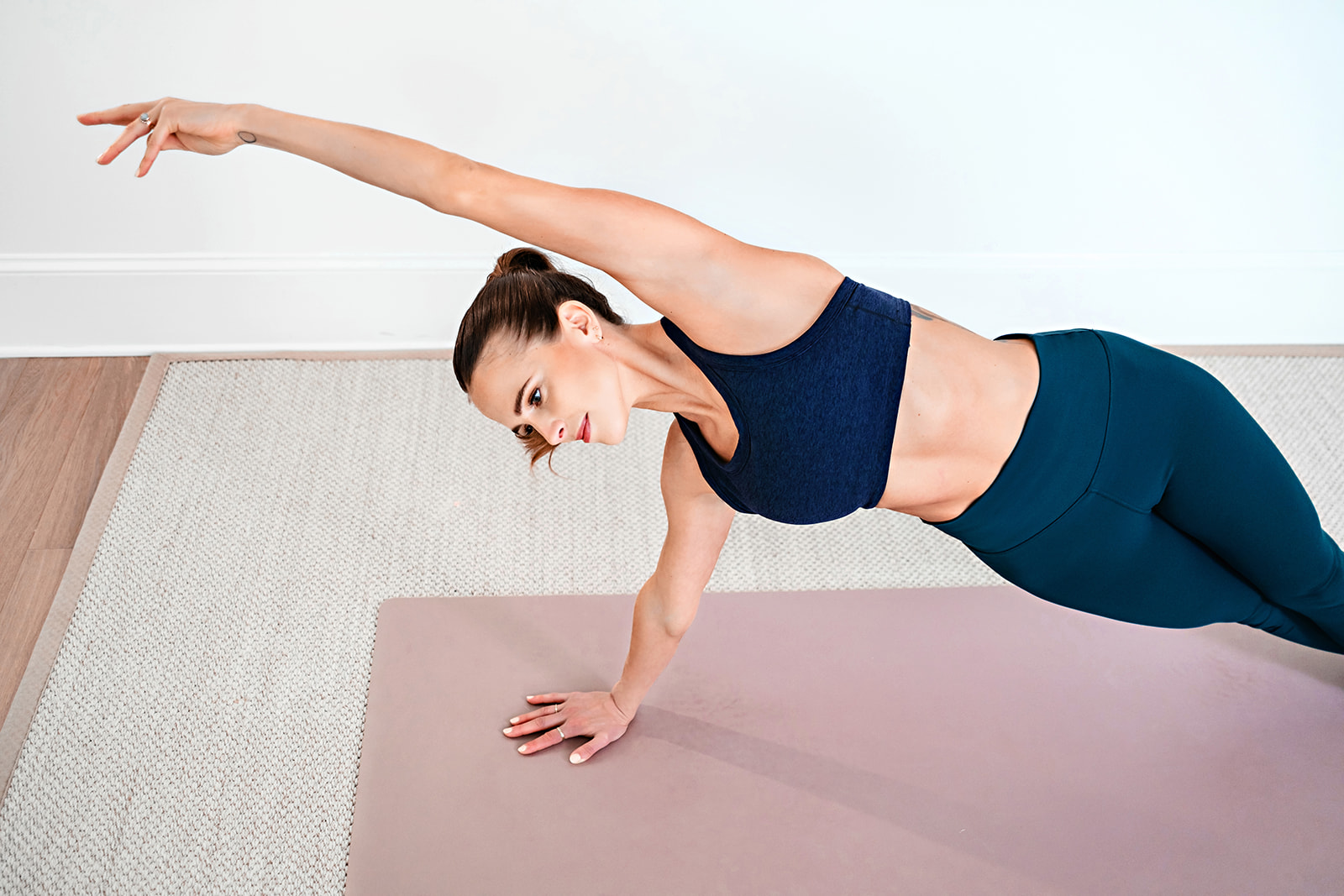When I first started practicing Pilates, I knew breath was important—but I didn’t realize just how powerful it could be. Breath in Pilates isn’t just about staying calm or focused (though that’s a bonus!). It’s a tool—one that can support your core, challenge your stability, and completely change how an exercise feels in your body.
Let’s break it down.
Exhale to Engage
In Pilates, we often exhale during the most challenging part of a movement. Why? Because exhaling helps engage your core muscles. Try it: do a little “hah” breath, like you’re fogging up a mirror, while drawing your navel in toward your spine. Feels pretty natural, right?
Now try the same thing, but inhale as you pull your navel in. It’s a lot harder to connect to your core, isn’t it?
Think about an ab curl—on the inhale, you prepare. On the exhale, you curl up and connect to those deep core muscles. Once you’re up in the curl, you want to keep that engagement because it’s what helps stabilize your lumbar spine, ribcage, and pelvis.
Inhale to Release (Which is Just as Useful)
Inhaling helps release the core, and that’s just as important. It allows movement. It helps us stay fluid. In Footwork, for example, you can exhale as you push the carriage out while lightly engaging your core, and inhale as you guide the carriage in while gently releasing your core engagement.
Let’s talk about back extensions. The natural instinct is often to inhale as you lift—and that’s not wrong, but it is harder to keep your core engaged that way.
Take Swan, for example. You’re lying on your belly, getting ready to lift your chest. I often see newer clients inhale to rise and push their belly down into the box or mat to get more height. But that usually means they’re dumping into their lower back—and in Pilates, that’s a no-go.
Instead, try exhaling as you lift into the extension. That exhale helps activate your core and support your spine, especially through the lumbar region. You’ll still find height, but more importantly, you’ll find length. And that’s what we’re really after.
You Can Play With It
One of my favorite things about Pilates is that once you understand the breath patterns, you can play with them. In Swan, exhaling to lift is supportive and controlled. Inhaling to lift adds challenge, because it asks you to maintain core engagement without the natural help of an exhale. You can explore both and see how they feel in your body.
Breath Awareness = More Breath Capacity
Pilates is amazing for expanding breath capacity. You’ll start to notice how you can send your breath to different parts of your body—side ribs, back ribs, chest—depending on what the movement needs.
We learn to:
- Belly breathe during restorative moments or at the beginning and end of a class.
- Chest and ribcage breathe during core-intensive movements like ab curls (because breathing into your belly would disengage your core).
- Send breath into one side of the body in lateral flexion (like in Mermaid), helping open up the lungs and expand the ribcage.
All of this awareness boosts circulation, increases physical stamina, improves lung function, and calms the nervous system.
Bottom Line
Breath isn’t just background noise in Pilates—it’s part of the choreography. Whether you’re working on a back extension, a teaser, or a deep stretch, learning how to breathe intentionally can make all the difference.
Next time you’re on the Reformer or the mat, notice your breath. Use it. Play with it. Let it guide you deeper into your practice.
Gabrielle Saran
